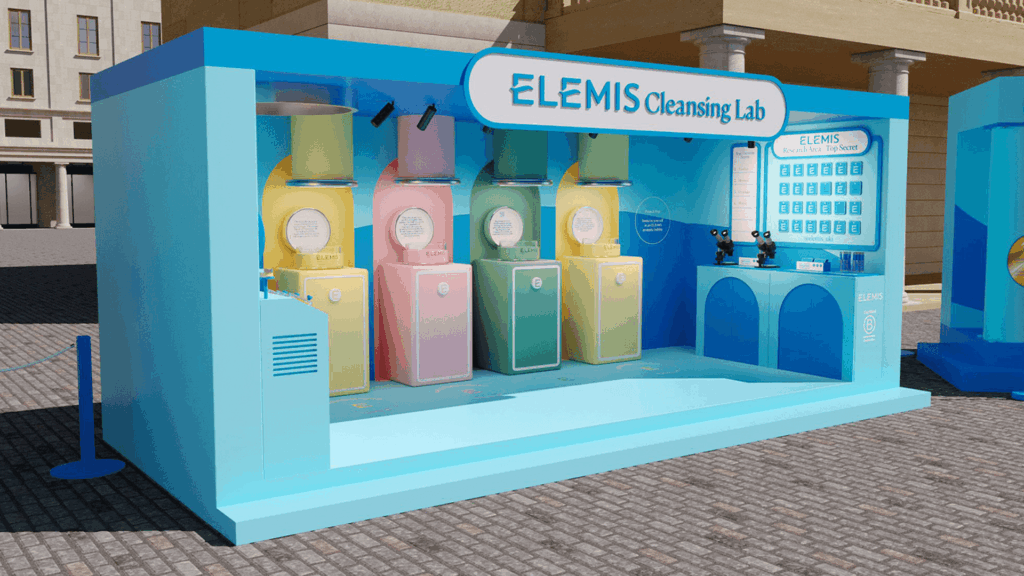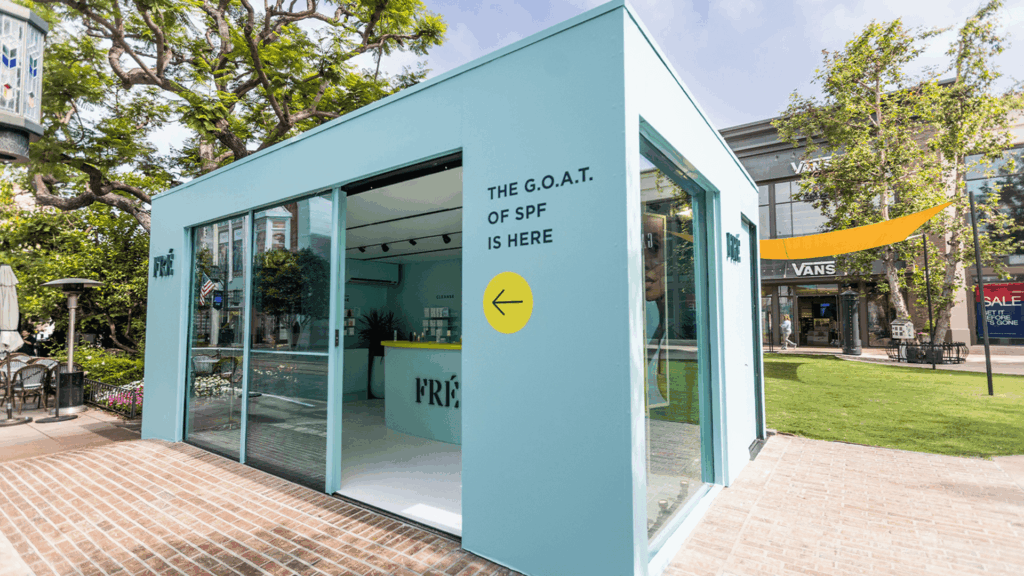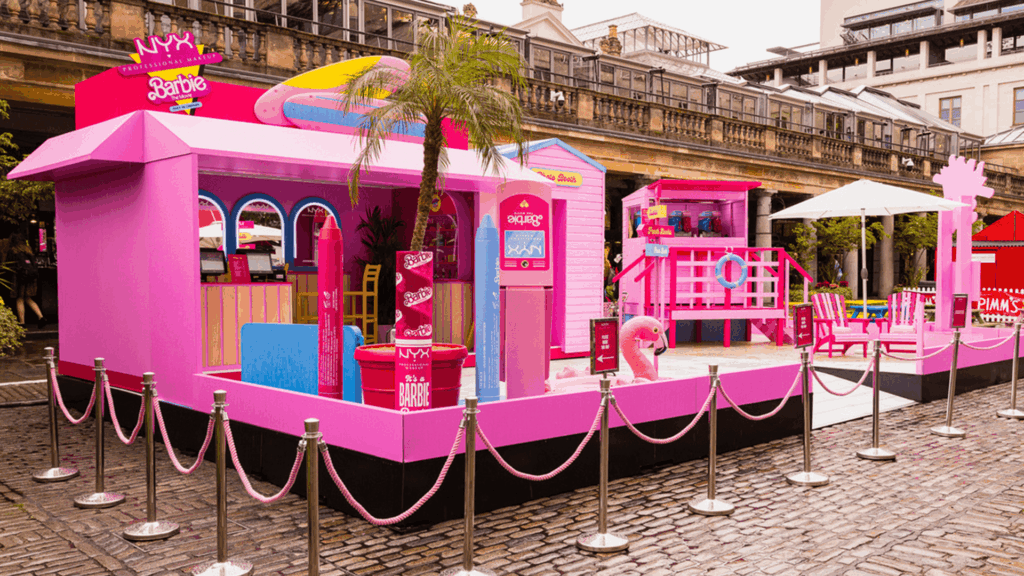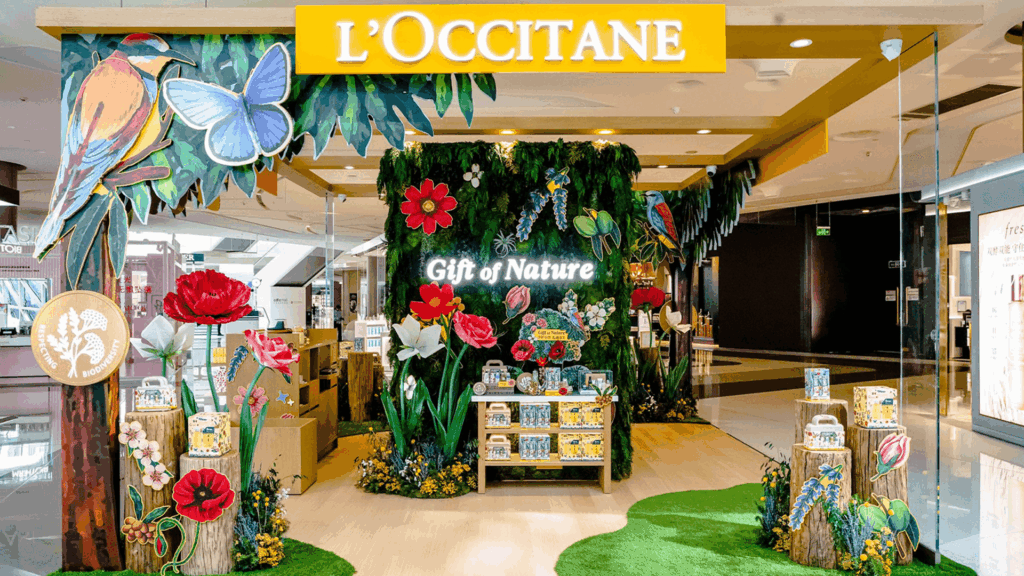Limited time, limited space,
A perfect find, in a fleeting race;
In beauty’s rush, never falling behind,
Pop-up moments; retail redefined… (Anonymous)
In an era where retail is all about instant and in-depth experience, beauty brands are deflecting from conventional static storefronts to something more fluid, captivating and dynamic. Popularized as pop-up shops, these temporary spaces aren’t just about selling cosmetics and skincare; they’re immersive, tech-savvy and built to enchant beauty enthusiasts with never-before wonders like AR mirrors, digital consultations, refillable stations and more.
For cosmetics brands, the allure of pop-ups lies in agility, visibility and the power to create buzz without the long-term commitment of traditional retail. As consumers increasingly seek personalized, shareable and immersive shopping moments, pop-ups provide the perfect canvas for these evolving expectations.
With a high-end revenue of pop-ups estimated at $80 billion (USD), expected to exceed $95 billion (USD) by the end of this year (2025), industry experts are confident that pop-ups are here to stay, reshaping the cosmetics landscape with crisp, strategic brand positioning for targeted sale as well as high CX and CLV.
Pop-Up Beauty Stores – The Concept
Often referred to as Flash Retailing, pop-up shops are temporary retail spaces designed to offer customers a curated, limited-time experience of products in conventional as well as off-beat locations like shopping malls, airports, events, festivals etc. Unlike permanent stores, beauty pop-ups are flexible, thematic and often experimental.
Themed, interactive and photo friendly, the primary purpose of popup shops is to convert casual visitors into brand advocates with the strength of effective retail brand activation as well as experiential marketing.
Pop-up shops is the perfect space for
- testing new products and markets,
- driving sales, both online and offline
- increase brand awareness, visibility and reach with low financial risks
The key difference of pop-ups with traditional stores is their focus on timed exclusivity and surprise. They spark brand engagement, create a sense of urgency and build immersive experiences that feel more like an event in comparison with a store visit that is based on consistent availability.

Why Pop-Up Stores Are A D2C Beauty Brand Strategy Companies Are Investing In
Pop-ups offer a cost-effective alternative to permanent retail spaces, especially in high-rent areas. For new or emerging brands, they’re a low-risk way to test new markets or product lines before scaling.
Beyond cost, pop-ups feature among key beauty retail trends and are thus, brilliant psychological tools. Their limited lifespan fuels FOMO (fear of missing out), encouraging spontaneous purchases and increased footfall.
More importantly, these activations allow brands to tell their stories vividly, with engaging experiential components like scent walls, texture stations or build-your-own lipstick / eye-palette counters etc. all of which deepen emotional connection with customers.
As per statistics, 66% retailers open pop-ups for brand awareness; 63%, for building brand connections and 46%, to introduce new products.

Examples of Successful Cosmetic Pop-Ups
Some of the industry’s most iconic pop-ups have come from brands that understand the power of experience.
- Glossier’s traveling showrooms – From their first pop-up launch in London in 2017, Glossier’s Travelling Showrooms have mastered multi-sensory experiential retail in cosmetics, in cities like top cities like Seattle, Paris and Miami. It mirrored the brand’s minimalist aesthetic and encouraged try-before-you-buy interactions, drawing thousands. Glossier’s pop-up that celebrated the iconic ‘You’ Fragrance in London, launched the perfume back to the limelight following a TikTok video shared by a user, gathering 600,000 likes and 14 million views.

Source : Glossier)
- Fenty Beauty’s interactive pop-ups equipped with selfie zones, shade-matching mirrors, live demos, expert advice, complimentary products and styling sessions allowed visitors to engage directly with the brand just like a celebrity would. .

Source : Fenty
- K-Beauty and many notable indian brands have launched experiential pop-ups that educate consumers on unique skincare rituals, introduce new products and create sensory experiences with social media shareability.
Role of Technology in Pop-Up Beauty Experiences
Technology has turned pop-up beauty stores into futuristic retail playgrounds. Augmented reality (AR) mirrors allow users to try on makeup virtually; no swatching required. Mobile apps and QR codes guide customers through personalized product discovery journeys.
Behind the scenes, brands leverage data analytics from pop-ups to understand customer behavior, dwell time and preferences; insights that shape future campaigns and product lines.

Social Media & Influencer Marketing Integration
Pop-up shops as a D2C beauty brand strategy, are designed to be ‘Instagrammable. From flower walls to neon quote signs and product installations, the decor often doubles as content backdrops.
Influencer partnerships make these events viral with exclusive invites, live unboxings and behind-the-scenes content that is irresistible to fans that connect with it. Meanwhile, user-generated content (UGC) from these events amplifies brand reach organically across platforms.

Sustainability and Innovation in Pop-Ups
Beauty pop-ups are becoming more conscious, blending innovation with responsibility. Here’s how pop-up beauty stores are embracing sustainability:
- Eco-friendly materials: Using recycled, biodegradable and reusable store fixtures to reduce environmental impact.
- Modular and reusable setups: Designed to be dismantled and reused across multiple locations, cutting down on waste.
- Refillable beauty stations: Encouraging customers to bring containers or refill on-site, reducing single-use packaging.
- Zero-waste packaging: Limited-edition products with compostable or fully recyclable materials.
- Conscious consumerism messaging: Educating visitors on sustainability practices and aligning with customer values.
Challenges and Considerations
To launch a pop-up, brands must scout suitable locations, often competing for high-traffic areas that many others may be pursuing as their beauty brand activation strategy. Initial set-up, logistics as well as paper-work for permissions etc. can become a little taxing. These hurdles though, can be easily settled with professional assistance that can help with detailed planning, cutting down months of preparation time for launch to hand-counted days.
Furthermore, Complexity in ROI tracking which was once a major issue can been remedied with AI powered automated tracking solutions.
The Future of Pop-Up Shops in Cosmetics
The future of beauty pop-ups is in hybrid retail, blending physical experience with digital convenience. Shoppable livestreams, mobile-triggered AR and gamified experiences are already gaining traction.
As metro cities saturate, brands are eyeing tier-2 cities, where aspirational shoppers have expressed their desire for in-person luxury experiences. In the future, we can expect personalization to deepen with AI-driven recommendations, smart mirrors and automated skincare diagnostics as the next frontier.

